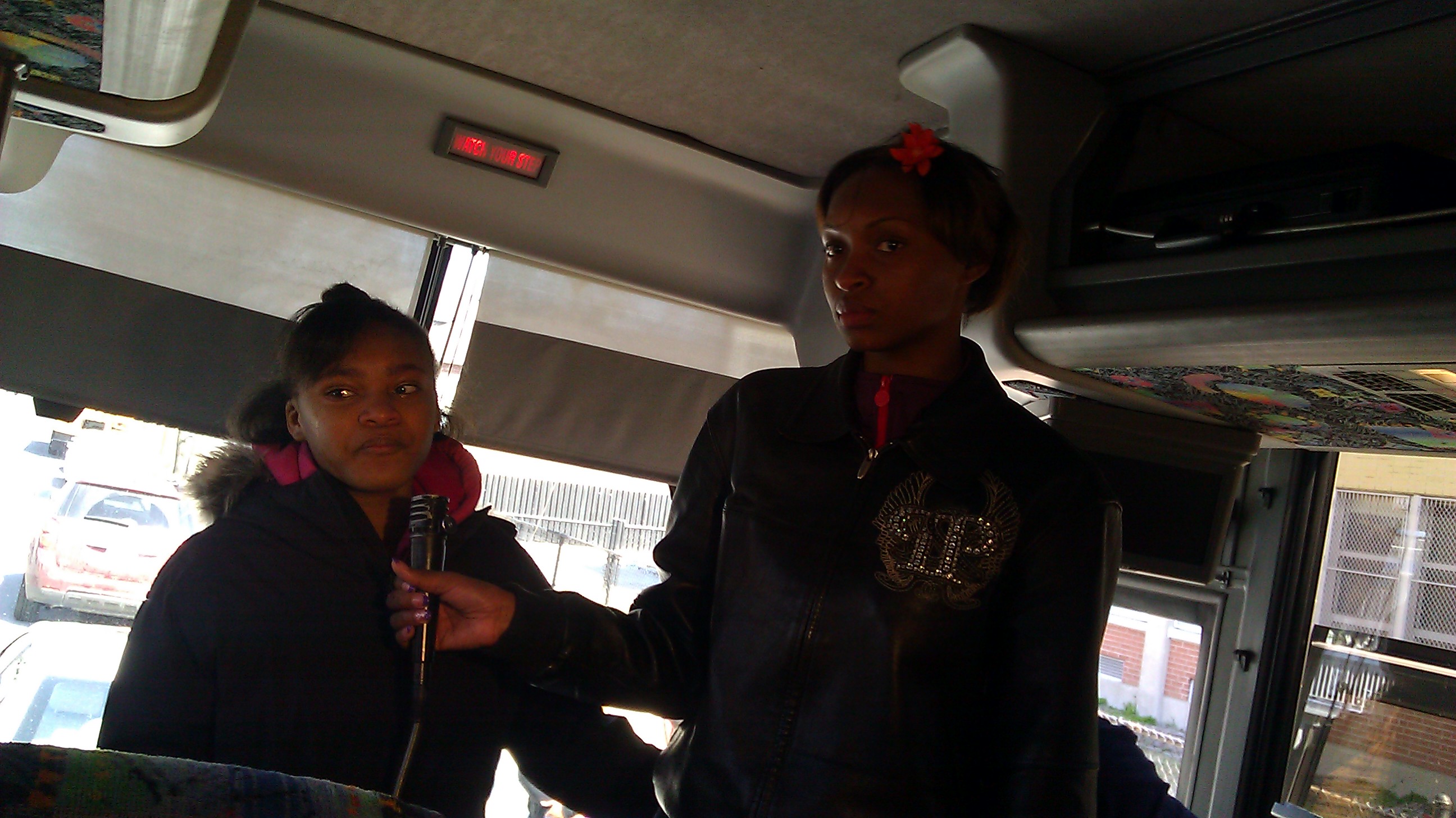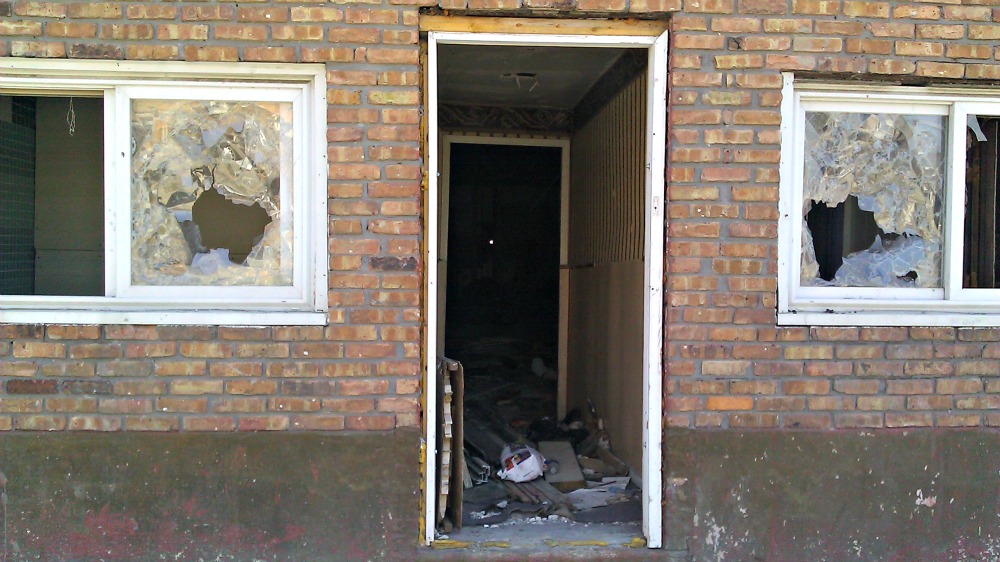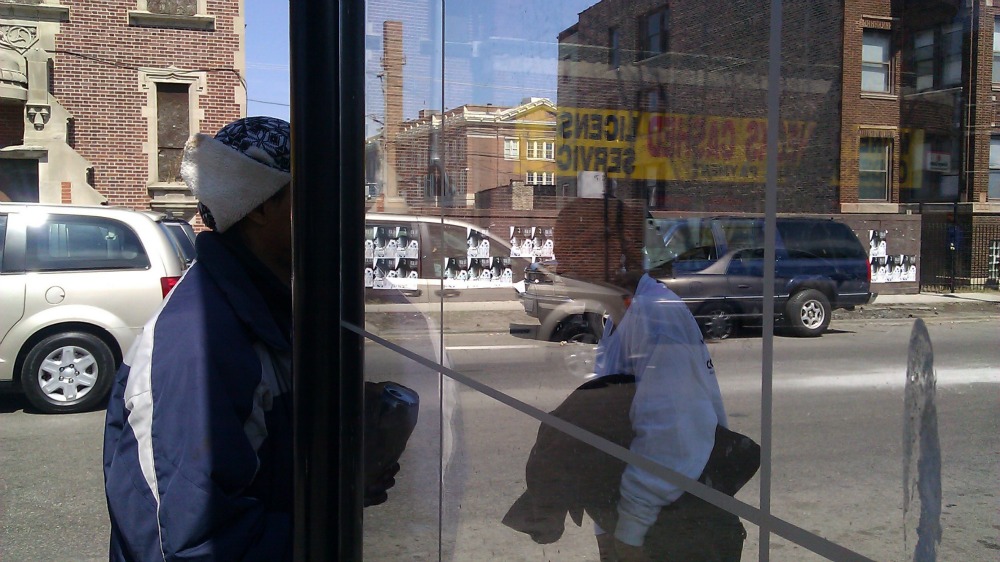Bus tour shows ‘collateral damage’ from school closings
By Linda Lutton

Bus tour shows ‘collateral damage’ from school closings
By Linda LuttonThe Chicago Teachers Union took reporters and elected officials on a “School Closings Bus Tour” Thursday. It was not an unbiased bus tour. The teachers union is the biggest, most well-funded opponent of school closings, and the union is fighting the district’s plan to shutter 54 schools.
So, with the bus bouncing over South Side potholes, the union’s Jackson Potter told riders that school closings are more of a business plan than an education plan—a way to privatize the system. And he drew a parallel to Chicago’s public housing…
“…Where we were told that in order to improve housing we had to destroy it,” Potter said into the bus’s microphone. “We’re very concerned about it, and so we want you to see the collateral damage of these decisions and why we really need to raise the alarm and assess and analyze carefully before we make such drastic choices.”
Reporters on the bus sat next to clergy and union backers and elected officials. There were three state reps, two congressmen, and seven aldermen. The first stop: Mahalia Jackson School on 88th and Sangamon. Across the street from the school, one alderman, Bob Fioretti, addressed reporters, the neighborhood’s tidy brick bungalows behind him.
“We all know a home that is foreclosed impacts the property values about two blocks in every direction. What will a school do? And how much will it take down our community?”
The tour did not include the inside of schools. But grandmother Jymmetta Penson told the tourers Mahalia Jackson already has all the sweeteners the district is promising for receiving schools.
“We have a library, a gym, a cafeteria, resource rooms,” Penson rattled off. “We have two computer labs, we have a science lab, we have laptops—we have iPads on order.”.
All those things will be inventoried—that begins Friday. And a worldwide logistics firm will figure out how to move everything from this school to the receiving school, Fort Dearborn, which sits across the Metra tracks. The tracks run at street level here.
“I don’t want them coming across the tracks. One, because of the danger of the trains going back and forth, and two, because of the gangs. And they do fight when they come across. They know who lives on this side of the tracks, they know who lives on that side of the tracks,” Penson said.
The bus rolls north into Englewood, where on some blocks, vacant properties outnumber lived-in homes. The bus parks outside the biggest abandoned building in the neighborhood, Guggenheim Elementary, closed last year. The school’s marquee still notes that June 14 is—was— the last day of school.
Jasmin Murphy and her mom get on the bus. Jasmin had attended Guggenheim since kindergarten, lived right across the street. She attends a higher scoring school now, Amandla Charter School.
“The school I’m at now, it’s a really good school,” Jasmin tells the people on the bus. “But it’s just hard because I knew everyone and it was easy to get help and… I just really miss it.”
The reporters snap pictures of the sixth grader’s face, wet with tears. Jasmin’s mom says she’s grateful for the higher performing school. But she worries that school closings hurt kids’ health: Depression. Having kids feel like their low test scores caused their schools to close.

The next stop was Jackson and Kostner.
This is the far edge of Melody Elementary school’s attendance boundary. The district’s plan calls for Melody students to walk to Delano next year.
As we set out, we quickly get to a burned out, abandoned two-flat. The door is swung wide open. Front windows broken out. Everybody stops.
“I mean, look at this!” says a union organier as we get to the house. “This isn’t even closed. They could easily take a child right in that building.”

“I wouldn’t be surprised if someone didn’t sleep in there—people who are homeless,” Congressman Danny Davis said .
This school closings tour has really become a tour of Chicago’s ghettos. A tour of disinvestment and unemployment and neglect… a tour of all kinds of issues the school district did not create, but issues that complicate shutting down 54 schools.
When we get to Pulaski, a mom points out that because of the proposed school closing, little kids—kindergartners, even—will be crossing this very busy street to get to school. Pulaski is rough, too.
“What you see on this corner—trash,” she said. “You have all these—I don’t have any other word for them, but crackheads… and these children have to walk past these every day. Liquor store. You’ve got a liquor store, you’ve got the currency exchange that the crackheads hang inside. And then you have…this used to be a car lot, but you still have all the drug dealers standing on these corners.”
In response to the bus tour, Chicago Public Schools sent out a statement that reiterated all the upgrades students will have at their receiving schools—air conditioning, counselors, better computer labs. “The bottom line is that every student will be in a better facility in the fall than they are this school year,” the statement said.
Outside Delano school, which was a 20- minute walk and not far enough to qualify students for a bus , Congressmen Danny Davis and Bobby Rush remembered other promises by other mayors and decided to remain skeptical.

“I don’t have any reason to believe that that’s necessarily going to happen,” he said. “Education is based on the teachers being well trained, children being motivated, parents being stimulated, communities being activated…having all the materials that you need to work with, that’s what will cause the children to learn better. I’m not sure that just being in another building is going to determine their ability to learn.”
Rush added, “And don’t try to appease these suffering people with air conditioning on the inside, and on the outside chaos and demolition and destruction on the outside.”
With that, reporters and politicians, except for Congressman Davis, who represents this district, got back on the bus.